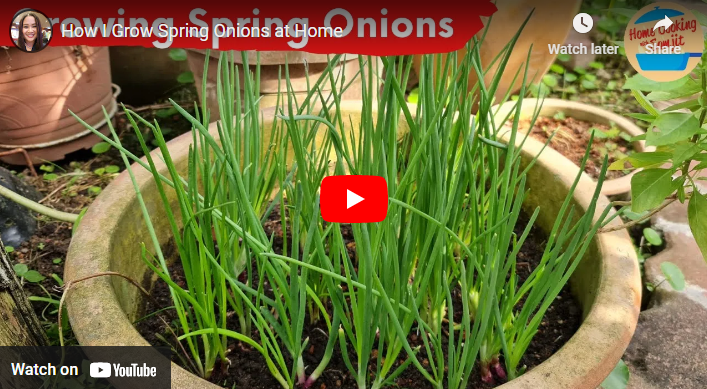Spring onions, also known as scallions or green onions, are a popular ingredient in many cuisines worldwide. These versatile vegetables not only add flavor to dishes but also provide numerous health benefits.
To grow spring onions in Singapore, prepare a well-draining soil mix with compost and sand. Plant the spring onion bulbs or seeds in a sunny spot, keep the soil consistently moist, and harvest the green shoots when they reach the desired size, usually within a few weeks.
If you’re living in Singapore and want to experience the joy of harvesting your own fresh spring onions, this step-by-step guide will help you get started.
How to Grow Spring Onions in Singapore: Step-by-Step Guide
Spring onions are a type of onion with edible hollow leaves and a mild flavor. They are an excellent addition to salads, stir-fries, soups, and many other dishes. Growing your own spring onions in Singapore allows you to enjoy the freshness and flavor of these vegetables while having control over their quality.
Step 1: Selecting the Right Variety of Spring Onions
Before you start growing spring onions, it’s essential to choose the right variety that suits the Singapore climate. Some common varieties that thrive in Singapore include “Evergreen,” “White Lisbon,” and “Red Beard.” Consider factors such as taste preferences, growth habits, and disease resistance when selecting the variety that best suits your needs.
Step 2: Choosing the Ideal Location for Growing Spring Onions
To ensure the successful growth of spring onions, selecting an ideal location is crucial. These vegetables require a sunny spot with at least six hours of direct sunlight daily. Prepare the soil by removing weeds, breaking up clumps, and enriching it with organic matter such as compost.
Step 3: Planting Spring Onions
There are two main methods for planting spring onions: starting from seeds or transplanting seedlings. If you choose to start from seeds, sow them directly into the prepared soil, ensuring a spacing of about 1 inch between each seed. Alternatively, you can start seeds indoors in seed trays and transplant the seedlings when they are around 4 to 6 inches tall.
Step 4: Caring for Spring Onions
Proper care is essential to ensure healthy growth and abundant harvest of spring onions. Water the plants regularly, keeping the soil consistently moist but not waterlogged. Fertilize the plants with a balanced organic fertilizer every four to six weeks to provide them with essential nutrients. Monitor the plants for any signs of pests or diseases and take appropriate measures to control them.
Step 5: Harvesting Spring Onions
Spring onions are typically ready for harvest when their leaves are around 6 to 8 inches long and have a rich green color. To harvest them, gently pull the plants out of the soil, taking care not to damage the roots. Alternatively, you can snip off the green leaves with a sharp pair of scissors, leaving the white bulb in the ground for regrowth.
Step 6: Storing and Using Harvested Spring Onions
After harvesting your spring onions, it’s important to store them properly to maintain their freshness and flavor. Place them in a perforated plastic bag or wrap them in a damp paper towel and store them in the refrigerator. Spring onions can be used in various culinary preparations, including salads, stir-fries, omelets, and as a garnish.
Common Challenges in Growing Spring Onions in Singapore
Growing spring onions in Singapore can present some challenges due to the tropical climate and common pests and diseases. To overcome these challenges, provide adequate shade during the hottest parts of the day, use organic pest control methods, and maintain proper plant hygiene to prevent diseases.
Can I grow spring onions in containers?
Yes, spring onions can be grown in containers as long as they have enough depth for the roots to develop. Use a well-draining potting mix and ensure the containers receive adequate sunlight.
How long does it take for spring onions to mature?
Spring onions usually take around 8 to 12 weeks from planting to maturity. However, you can start harvesting the leaves once they reach a suitable size for your culinary needs.
Can I use store-bought spring onions to grow my own?
Yes, you can use store-bought spring onions to grow your own. Place the white bulbs with the root end intact in a glass of water, and new green shoots will start to grow. Once the shoots are around 4 to 6 inches tall, you can transplant them into the soil.
Are there any alternative methods to growing spring onions without seeds?
Yes, apart from growing from seeds or using store-bought spring onions, you can also grow spring onions from sets or transplants purchased from nurseries or garden centers. Sets are small onion bulbs that can be planted directly into the soil.
Can I grow spring onions indoors?
Yes, you can grow spring onions indoors as long as they receive sufficient sunlight. Place them near a south-facing window or use artificial grow lights to provide the necessary light for their growth.
Conclusion
Growing spring onions in Singapore can be a rewarding and enjoyable experience. By following the step-by-step guide outlined above, you can successfully cultivate these versatile vegetables in your own garden or even in containers. Enjoy the freshness and flavors of homegrown spring onions while adding a touch of green to your culinary creations.




